Vinh Nghiem Pagoda

Bathed in the golden sunlight of Bac Giang Province, Vinh Nghiem Pagoda graces the peaceful countryside. A timeless symbol of Vietnamese religion and culture, this temple houses 3,000 woodblocks recognized by UNESCO as a Memory of the World documentary heritage.
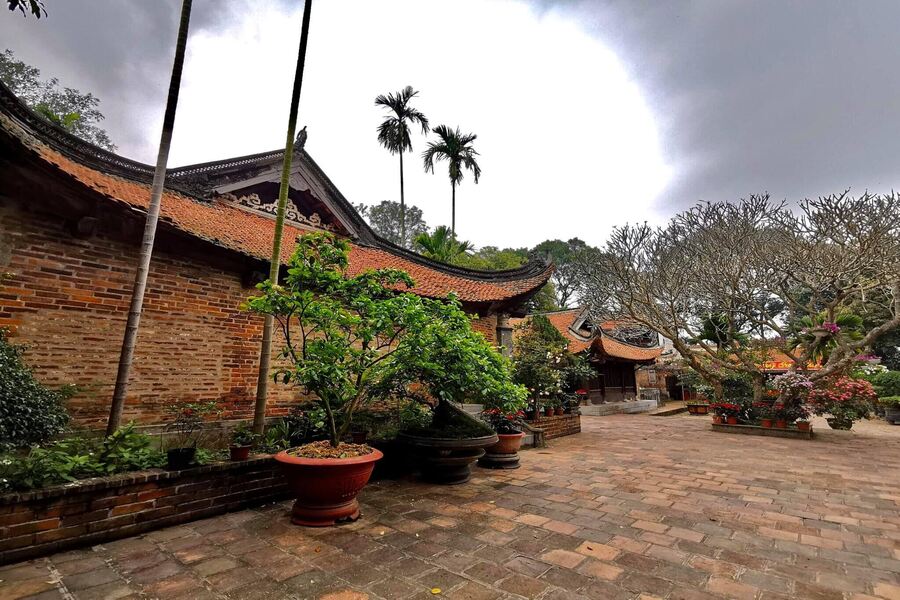
Instead of grandeur, Vinh Nghiem Pagoda exudes a peaceful and quiet atmosphere
The temple is the birthplace of Truc Lam Zen sect, the dominant branch of Vietnamese Buddhism. For centuries, this ancient temple has been a sanctuary for those finding peace through Buddhism. Let Asia King Travel unveil the temple's sacred charm in this article.
Vinh Nghiem Temple is an ancient temple in Duc La Village, Yen Dung District, Bac Giang Province. Cause of that it is also known as "Duc La Temple," and the annual festival is often referred to as "La Festival ".
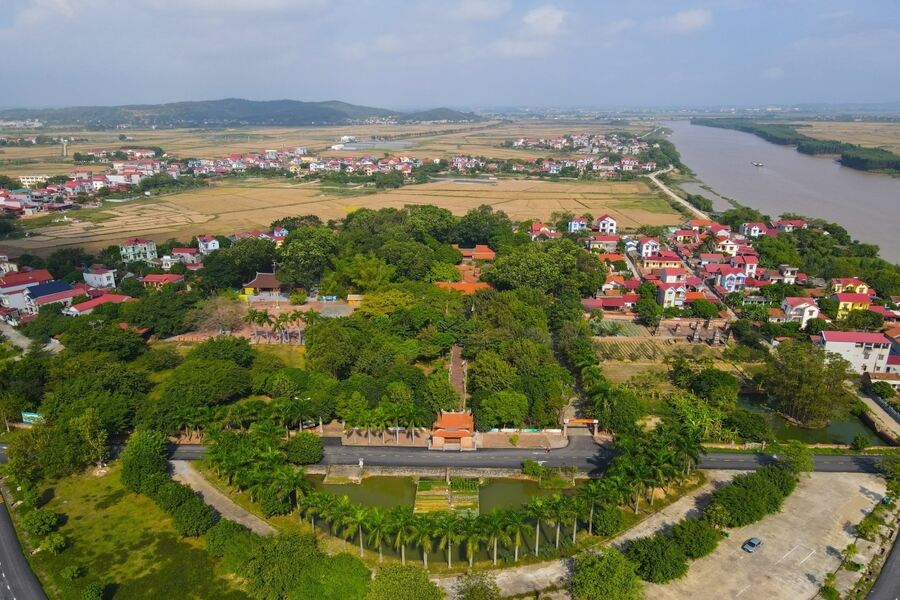
Vinh Nghiem Pagoda beside the Luc Nam River
The temple enjoys a beautiful location. It faces the confluence of Thuong and Luc Nam rivers, Co Tien Mountain behind. Benefiting from a prime location surrounded by mountains and rivers, Vinh Nghiem Pagoda is also blessed with natural beauty.
Vinh Nghiem Pagoda is a mere 75 kilometers from Hanoi, making it easily accessible by road. The journey takes approximately 1.5 hours. For anyone interested in visiting, simply arrive in Hanoi and follow the directions below.
From Hanoi, cross Red River and proceed along National Highway 1A until you reach Bac Giang City. Turn right onto Tay Yen Tu Street. Upon reaching Tan An Intersection, turn right onto Provincial Road 299B towards Tri Yen Commune. The pagoda is located north of La Village in Tri Yen Commune.
Suggested for you: Perfume Pagoda 1-day tour
Spring is the ideal time to visit the pagoda. New leaves sprout and flowers bloom, creating an enchanting atmosphere. Additionally, visitors can attend La Festival, held on the 14th day of the second lunar month (usually in early March).
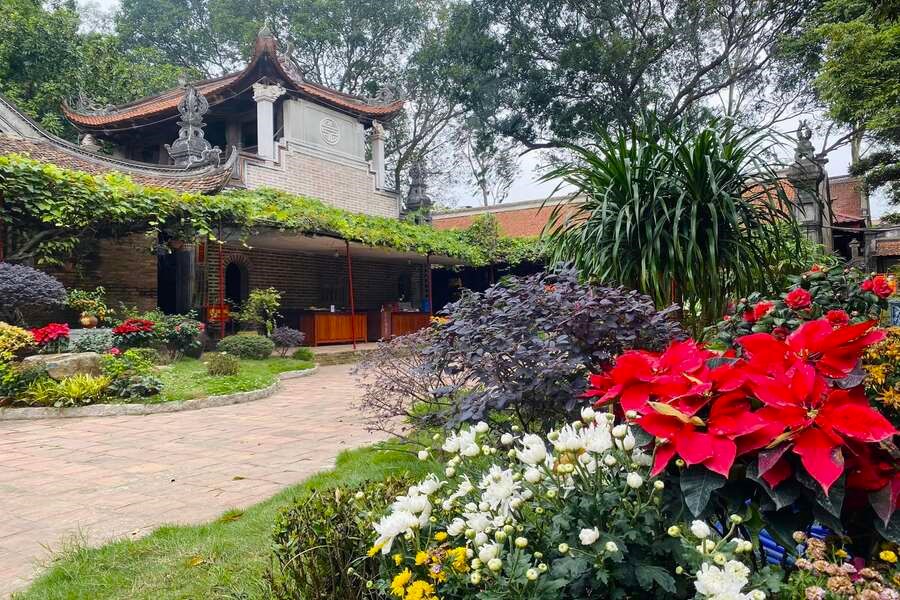
Vinh Nghiem Pagoda in spring
This festival is both a solemn occasion and a joyous celebration. The diverse activities attract a multitude of Buddhists and tourists from near and far. In addition to traditional rituals, various Vietnamese folk games such as swinging, tug-of-war, and wrestling are enthusiastically embraced by festival attendees.
Legend has it that Vinh Nghiem Pagoda was first constructed under the Ly Dynasty (11th century). In the late 13th century, Buddhist Emperor Tran Nhan Tong expanded and developed into a major Buddhist center of the Tran Dynasty, renaming Vinh Nghiem. The pagoda is closely associated with the birth and development of the Truc Lam Yen Tu Zen sect.
As the ancestral home of this sect, Vinh Nghiem Pagoda was built on a grand scale, with numerous structures adhering to the standards and models of traditional pagoda architecture. It is the quintessential Vietnamese Buddhist temple, earning the reputation as a "great ancient temple."
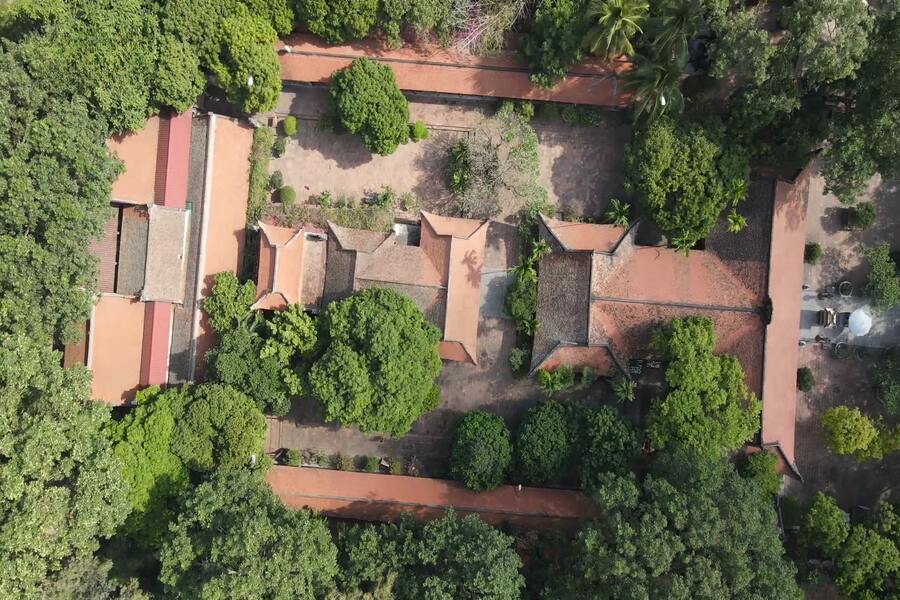
Vinh Nghiem Pagoda follows a single-axis layout, similar to many other ancient temples and pagodas in Vietnam
Vinh Nghiem Pagoda has a standard traditional Vietnamese architecture encompassing approximately one hectare. It follows the principle of "facing the river" (Thuong and Luc Nam rivers in front) and "leaning on the mountain" (Co Tien Mountain behind).
The pagoda consists of five main architectural complexes: Three Entrances Gate, Three Jewels Hall, First Patriarch's House, Bell Tower, and Second Patriarch's House. Each complex serves a distinct purpose in religious ceremonies and the daily lives of Buddhists.
Woodblocks at Vinh Nghiem Pagoda are one of Vietnam's priceless cultural treasures. It comprises 3,050 wooden boards inscribed with Chinese and Nom characters, crafted between the 17th and early 20th centuries. The content of the woodblocks includes Buddhist scriptures and instructions for traditional medicine practices.
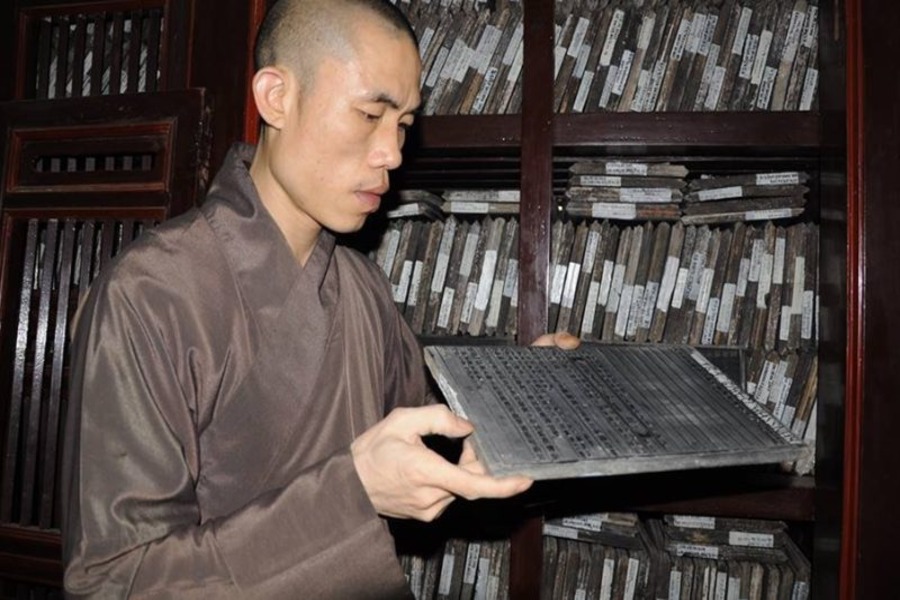
A Buddhist presents a woodblock. Source: Vinh Nghiem Pagoda Web Portal
A remarkable aspect of the woodblock collection is exceptional preservation over time. The printing boards' surfaces are often coated with a glossy black ink layer residue from previous printings. This ink layer has shielded the engravings from termites and mold, allowing them to endure for centuries without deterioration.
You'll encounter numerous Buddha statues within the pagoda grounds. Those honoring the Truc Lam lineage patriarchs, guardian deities, and Arhats. These figures are regularly venerated by Buddhist devotees visiting the pagoda.
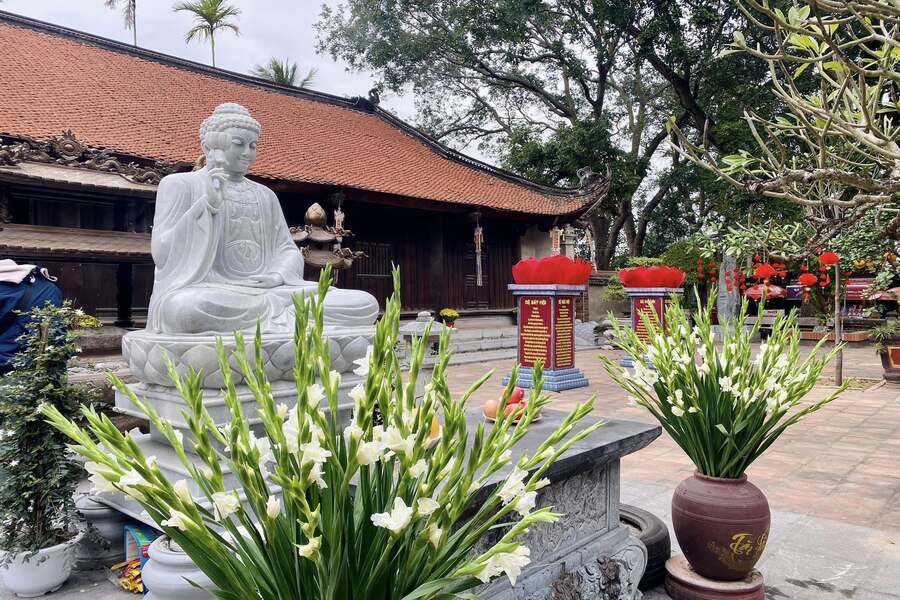
A Buddha statue in the pagoda's courtyard
Also within the pagoda courtyard, you'll find a large, six-sided stone stele erected in 1606. Additionally, a garden of stupas containing five significant monks relics in the temple's history. These relics with the temple's woodblock collections underscore Vinh Nghiem's reverence for and preservation of religious artifacts.
Inside the temple, there's a unique wooden drum, almost half a meter long, painted glossy black with two lines of Sanskrit inscription. This is one of the temple's distinctive artifacts and holds significant historical value.
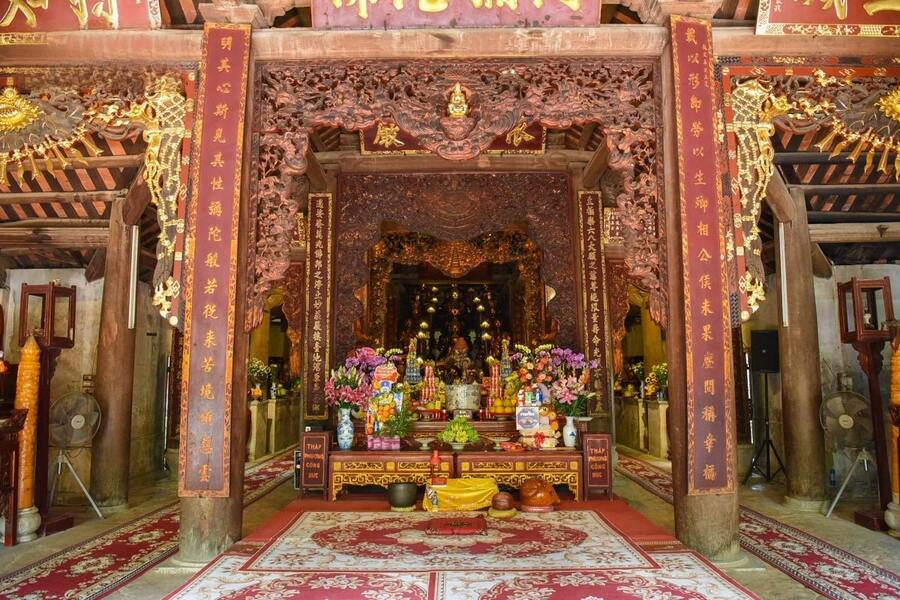
The altar space inside Vinh Nghiem Pagoda
Vinh Nghiem Pagoda welcomes every visitor from 7 am to 6 pm daily. However, on special occasions such as the 1st and 15th of the lunar month, as well as Buddhist holidays, the temple may have different opening hours. Therefore, before visiting, it's advisable to contact the temple directly for detailed information about their schedule.
Visiting Vinh Nghiem Pagoda is a journey back to the roots of Vietnamese Buddhism. Admiring the beauty of traditional Vietnamese architecture and exploring the invaluable collection of woodblocks will create lasting memories. Contact Asia King Travel for a spiritual journey.
Suggested for you: Vietnam Tours 10 Days